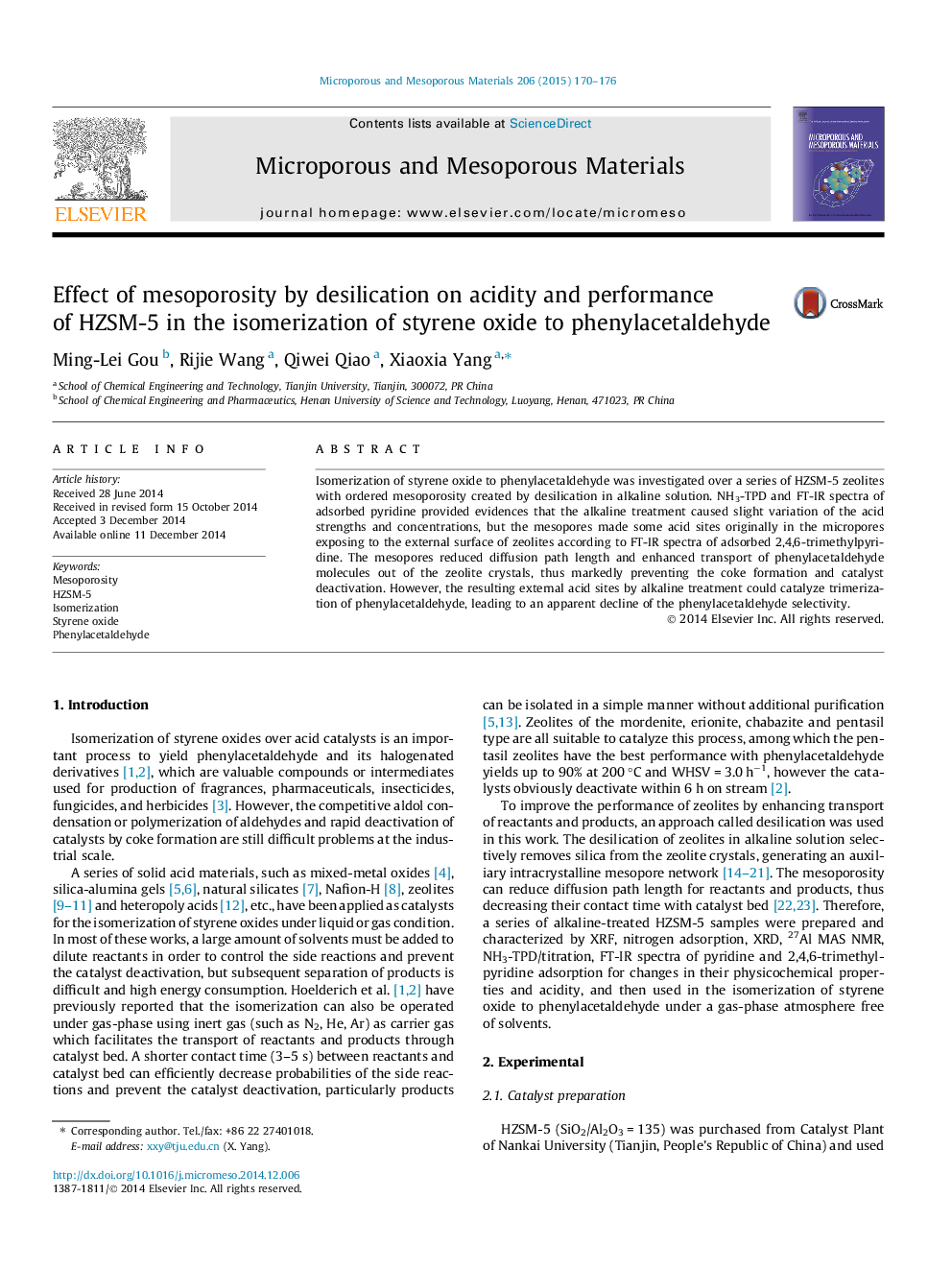| کد مقاله | کد نشریه | سال انتشار | مقاله انگلیسی | نسخه تمام متن |
|---|---|---|---|---|
| 72841 | 49035 | 2015 | 7 صفحه PDF | دانلود رایگان |

• Ordered mesoporosity can be created by desilication in alkaline solution.
• Alkaline treatment causes slight variation of the acid strengths and concentrations.
• Alkaline treatment makes increasing of the external acid sites.
• Catalyst lifetimes are markedly extended due to the intracrystalline mesoporosity.
• Trimerization of phenylacetaldehyde occurs at the external acid sites.
Isomerization of styrene oxide to phenylacetaldehyde was investigated over a series of HZSM-5 zeolites with ordered mesoporosity created by desilication in alkaline solution. NH3-TPD and FT-IR spectra of adsorbed pyridine provided evidences that the alkaline treatment caused slight variation of the acid strengths and concentrations, but the mesopores made some acid sites originally in the micropores exposing to the external surface of zeolites according to FT-IR spectra of adsorbed 2,4,6-trimethylpyridine. The mesopores reduced diffusion path length and enhanced transport of phenylacetaldehyde molecules out of the zeolite crystals, thus markedly preventing the coke formation and catalyst deactivation. However, the resulting external acid sites by alkaline treatment could catalyze trimerization of phenylacetaldehyde, leading to an apparent decline of the phenylacetaldehyde selectivity.
Figure optionsDownload as PowerPoint slide
Journal: Microporous and Mesoporous Materials - Volume 206, April 2015, Pages 170–176